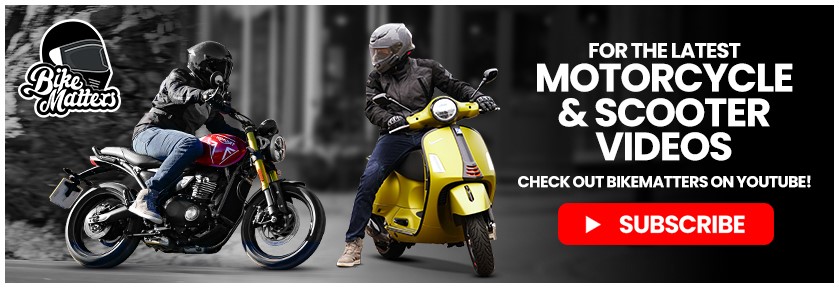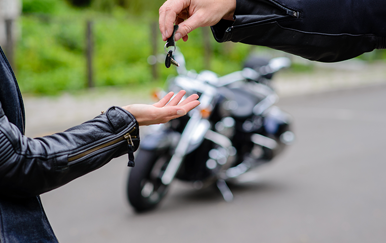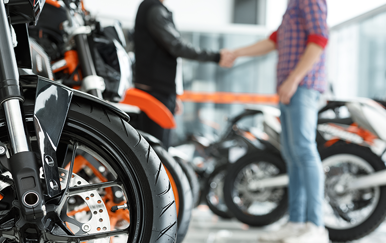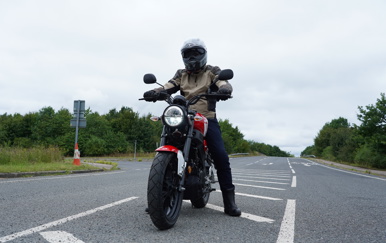Are you looking to purchase a motorcycle but struggling with where to start? With so many different types of bikes available and various licences to consider, it can quickly become overwhelming.
In this article, we’ve broken everything down to help you narrow your options. From understanding which licence, you need to ride certain motorcycles, to choosing the bike style and size that best fits your lifestyle, we’ll guide you through each step so you can confidently find the perfect match.
You may well have already done your research and have an idea of what you’re looking for, but just in case you haven’t, let's begin…

Different Bike Types:
Motorcycles come in many styles, each suited to different riding needs. It isn’t just an easy pick; there are loads of types to choose from.
Understanding their typical features and riding positions will help you choose the right one for what you need it for.
Naked:
Starting with Naked bikes, these are known for their minimalist, stripped-back styling, with little to no fairings or bodywork covering the engine.
This exposes the mechanical components, giving them a raw, aggressive look - they also usually have an upright riding position.
Cruiser/Bobber:
Cruiser and bobber styled bikes have a low seat height, long wheelbase, and relaxed riding position. They typically feature wide handlebars that sit high or swept back.
Sportsbike:
Sportsbikes are designed for speed, agility, and high performance. They feature aggressive styling with full fairings that improve aerodynamics and a forward-leaning riding position to reduce wind resistance.
Adventure:
Adventure bikes are built for versatility, capable of handling both long-distance road travel and light off-road terrain. They typically feature a tall seat height, upright riding position, and wide handlebars for better leverage and control.
Scooters & Maxi Scooters:
Scooters are designed for simplicity, practicality, and ease of use, featuring a step-through frame and automatic transmission. They usually have an upright, relaxed riding position with plenty of legroom and under-seat storage.
Off-Road/Motards:
Off-road bikes are lightweight machines built to handle dirt trails, gravel tracks, and rugged terrain. They feature long-travel suspension, high ground clearance, and knobby tires for maximum grip on loose surfaces.
The riding position is tall and upright, giving the rider a commanding view and better control when standing on the pegs.
What Bikes can I ride? | Consider your licence restrictions:
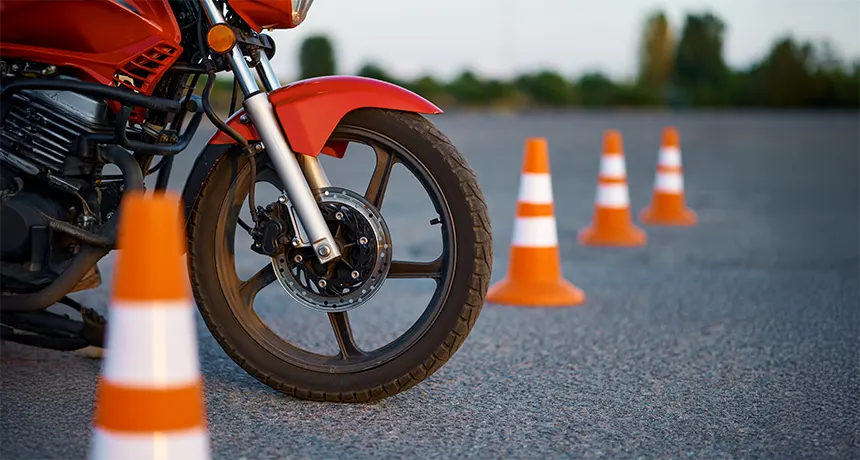
So the next question is, which of these can you ride with what licence? In the UK, it all depends on your age and the category of licence you hold.
Knowing where you fit on this ladder will help you narrow down your options and avoid falling in love with a bike you can’t legally ride yet.
What size motorbike can I ride on a CBT/A1 licence:
If you’re 16, you’ll be limited to a Compulsory Basic Training certificate (CBT) , which allows you to ride a moped up to 50cc. However, at 17, you can either choose to refresh your CBT or you can move towards getting your A1 licence for motorcycles up to 125cc.
What bikes can you ride on an A2 licence?
Then, when you get to 19, the A2 licence opens the door to bikes up to around 47bhp, which includes many mid-size models.
What size motorcycle can I ride on a full licence?
Once you’re 24, or 21 and have held an A2 Licence for at least two years, you can then go for the full Category A licence and ride any size bike you like.
Can you carry a pillion?
To carry a pillion, you will either need to hold an:
- A1 Licence
- A2 Licence
- Full A Licence
How do you plan to ride your bike? | Think about your riding environment:
It's important to choose a motorcycle that fits your riding environment. You need to have a think about where and how you’ll ride most often.
Are you going to be weaving through traffic on a city/urban commute, clocking up some miles on motorways or just simply a relaxed runaround for the weekend?
What is your budget? | How much do you intend to spend:
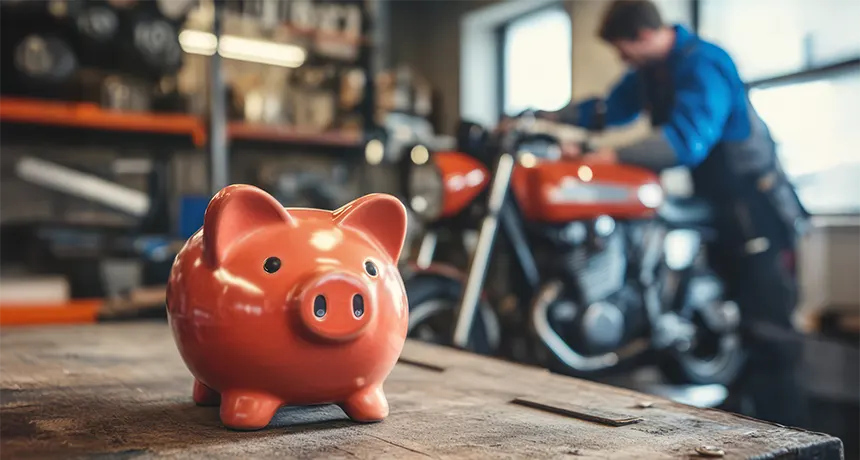
Before falling in love with a particular bike, it's important to know your budget and how much you’re willing to spend.
Setting a budget early not only helps narrow down your options but also keeps you realistic about what you can afford when you factor in additional costs such as insurance, riding gear, registration, fuel, and ongoing maintenance.
By being clear about your spending limit from the start, you’ll avoid overspending and ensure you choose a motorcycle that fits both your lifestyle and your wallet.
Is buying a new or used bike best?
When it comes to choosing a motorcycle, one of the first decisions is whether to buy new or used. Both options have their pros and cons…
When you buy new, you have the comfort of knowing you’ll be covered under warranty and all the latest tech and spec, which gives you complete confidence on the roads. You also know you are the only owner, so your bike hasn’t been mishandled previously.
On the other hand, a new motorcycle will obviously be more expensive and lose value pretty quickly.
When you look at buying a used motorcycle, it should be far more affordable, helping you get a bike you love without spending a fortune. Also, if you are a beginner rider, it is far stressful as small scratches or drops won’t be too much of a concern.
However, they do come with the downside of, as we said above, not knowing the previous owners and therefore not knowing fully how the bike had been treated. It could need maintenance/servicing straight away, and have no warranty.
Finance options:
As not everyone has the money to buy a motorcycle outright, fortunately, there are lots of financing options out there.
Some common ones include:
- Motorcycle Loans (PCP, HP)
- Dealer Finance
- Lease to own
However, it is important to consider interest rates, deposits, and insurance requirements.
Best Budget Bikes to consider:
So, if you are shopping on a budget, there are loads of great options to choose from. So why not take a look at our:
- Top 10 cheap 125cc scooters you can buy - under £2,500
- Top Best A2 Bikes Under 3K for 2025
- Top 10 Great Adventure Bikes under £10K
Other Cost Considerations | Maintenance, MOTs, Tax & Insurance:
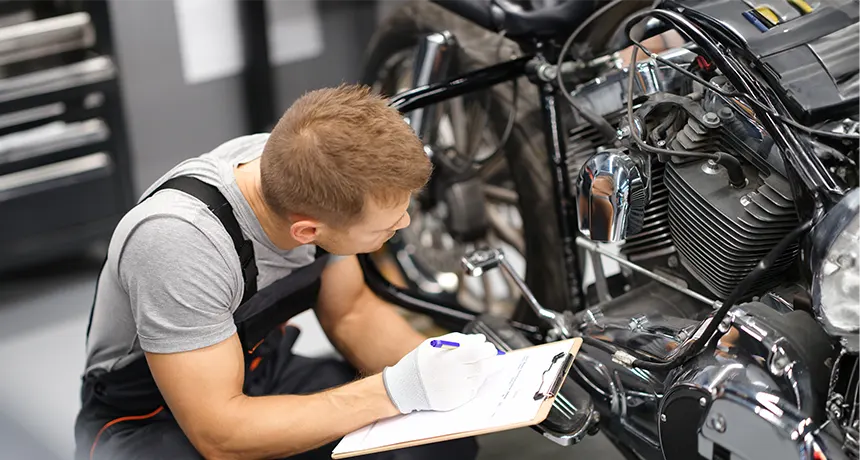 When it comes to buying a motorcycle, it's not just about the initial price. There are other costs involved that you need to consider.
When it comes to buying a motorcycle, it's not just about the initial price. There are other costs involved that you need to consider.
Running and upkeep costs can vary depending on the type of bike you choose to go for, how you use it and where you live.
Maintenance Costs:
It is important to keep on top of routine servicing in order to make sure your bike is safe and reliable. Regular checks such as oil changes, brake pads, chain adjustments and tyre replacements all add up over time.
For new motorcycles, some dealerships will offer free servicing for the first couple of years, so that is something to bear in mind when choosing the right bike for you.
MOT:
In the UK, motorcycles over three years old require an annual Ministry of Transport (MOT) test to ensure they’re roadworthy.
This test checks that everything is working as it should and is relatively inexpensive; however, if your bike does need repairs to pass, then costs can quickly rise - so again, keep this in mind when considering buying new or used.
Road Tax:
Motorcycle road tax is generally cheaper than for cars. However, it still varies depending on your bike's engine size and emissions.
Small-capacity motorcycles and scooters often benefit from lower annual tax rates, whereas a larger, higher-performance bike costs more to tax.
You can check current rates on the DVLA website before buying.
Insurance:
Motorcycle insurance is a legal requirement in the UK and one of the big costs to factor in when choosing a motorcycle.
Again, it all depends on who you are, what you ride, and even where you live. Insurers take age, riding experience, postcode, the type of bike you own and whether it's kept in a secure garage or on the street. More powerful bikes also tend to cost more to insure.
It's ideal to get a few different insurance quotes before you commit to buying a motorcycle.
Another thing to consider is the level of cover; third-party is the minimal legal requirement, but many riders opt for fully comprehensive policies for peace of mind.
Some insurers also offer extras such as:
These options are all worth weighing up to find out what fits your budget and riding lifestyle.
Fuel Ups:
Fuel is another ongoing cost that often gets overlooked when figuring out how much a motorbike will really cost you to run.
For petrol motorcycles, the size of the engine and the type of riding you do make a big difference. Long-distance motorway commuting can often be surprisingly good on fuel economy compared to short stop-start city rides.
Electric motorcycles are becoming an increasingly viable alternative. They generally cost much less per mile to fuel up compared to petrol bikes, and some can even be charged at home overnight for just a few pounds.
If you’re torn between petrol and electric, it might help to consider your riding habits. City riders could find electric especially cost-effective, while long-distance tourers might still prefer petrol for the convenience of quick refuelling.
What to look out for before buying a bike | Do your research:

Before you put money down on a motorcycle, it’s worth doing your homework.
There are loads of resources out there to help you compare bikes, check reviews and even get a sense of real-world ownership costs.
Useful guides & sites:
Manufacturer websites are a good starting point for spec information and official details.
However, if you’re looking for real life/day to day performance you’ll want to look at forums, owner groups, and social platforms such as YouTube and TikTok.
Getting the right fit | Make sure your motorbike fits you:
One of the most overlooked parts of choosing a motorcycle is making sure it actually fits you. The wrong fit can make riding uncomfortable, difficult, or even unsafe.
Here’s what to think about:
The importance of finding the right seat height:
Seat height is usually the first thing new riders worry about, and for good reason.
Being able to put at least one foot firmly on the ground when stopped gives you confidence and stability, especially at junctions or in slow-moving traffic. But it’s not just about height.
The overall riding position matters just as much. The “right” position depends on your body shape, flexibility, and the type of riding you plan to do. Try a few styles in person before committing.
Compare the rider weight capacity:
Every bike is built with your weight plus any luggage or passengers' weight in mind.
Exceeding this limit can affect handling, suspension performance, and even tyre wear. It’s worth checking the bike’s stated capacity, especially if you’re going to be carrying a pillion regularly.
Are you able to make adjustments to the bike (if needed)?
Even if a bike doesn’t feel like a perfect fit straight away, there are often tweaks you can make. Many motorcycles allow for adjustable levers, foot pegs, or handlebars to help tailor the riding position.
Lowering kits and aftermarket seats are also popular options for shorter riders, while taller riders might benefit from higher seats or bar risers to reduce cramped legroom.
If you are unsure whether or not you can adjust the height of a certain bike, it would be worth asking your local dealership or having a look around online.
How can you tell if a bike is too big for you?
A bike that’s 'too big' doesn't just relate to the seat height. Other signs include struggling to balance the machine when stationary, feeling top-heavy when moving at low speeds, or finding it difficult to push the bike around off the stand.
If you’re nervous every time you stop, or if you’re relying on tiptoes just to stay upright, it may be worth looking at a slightly smaller or lower model. Comfort and confidence should come first.
How can you tell if a bike is too small for you:
On the other hand, a bike that’s too small can feel cramped and slow. If your knees are hitting the handlebars, your back feels hunched, or you constantly feel like you’re on top of the bike rather than sitting comfortably in it, those are red flags.
Another giveaway is performance; if the bike struggles to keep up with your riding needs, especially on motorways, it might be time to size up.
Best Bike Top Picks | Choosing the right bike:
With so many models on the market, narrowing down your options can feel overwhelming. The best choice often depends on what you’ll use the bike for day-to-day. Here are some top picks to suit different types of riders.
Best Bikes for Urban Commuting/Short Trips:
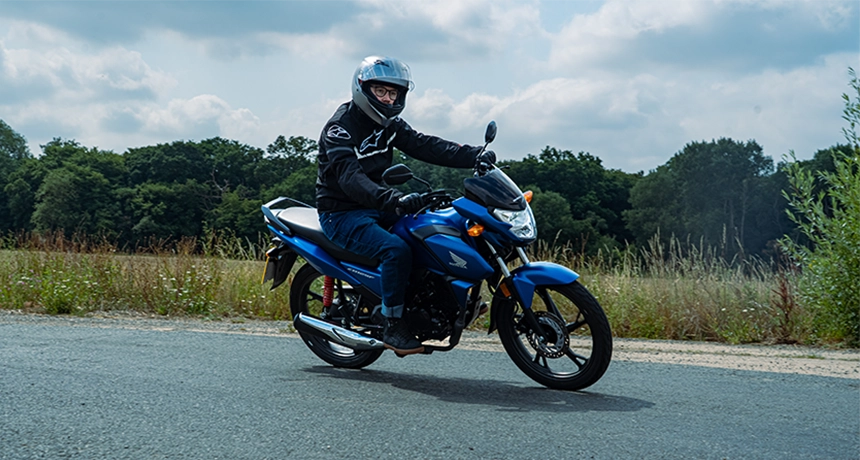
City riding means finding a bike that's light, nimble, and fuel-efficient to handle traffic and tight spaces with ease. You’ll also want quick acceleration and low running costs…
50cc (CBT):
- Petrol: Vespa Primavera 50 - stylish, compact, and perfect for weaving through traffic (£3,855)
- Electric: Piaggio 1 - a lightweight EV scooter with zero emissions and simple practicality (£2,815)
125cc (CBT/A1 Licence):
- Petrol: Honda CB125F – reliable, affordable, and great for daily commuting (£3,299)
- Electric: Maeving RM1S – Sleek, electric with modern tech and retro looks (£7,495)
A2 licence:
- Petrol: Honda GB350S – classic styling with enough power for everyday use (£3,999)
- Electric: Can-Am Pulse – futuristic design with smooth electric performance (£11,399)
Full licence:
- Petrol: Triumph Tiger Sport 660 – This is a versatile, comfortable motorcycle, well-suited for city or short trips (£8,995)
- Electric: Zero SR/F – this is a high-performance EV motorcycle that handles urban riding with ease (£20,415)
Best Bikes for Longer Commutes:
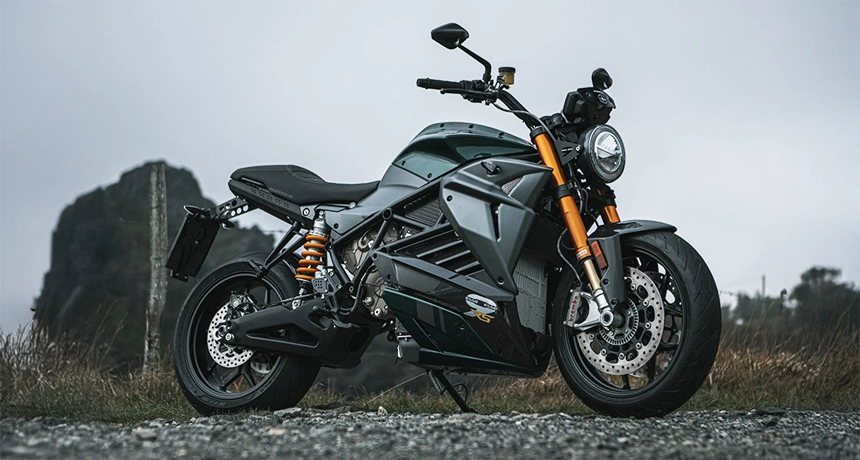
If you’re going to be taking a longer commute, meaning heading onto the motorway, you’ll need a bike with enough power to keep up at higher speeds, plenty of comfort for longer stretches, and good fuel economy to make the daily miles worthwhile.
Again, here are some of our top picks across licence categories:
50cc (CBT):
- Petrol: Bluroc Hero 50 - this is a rugged commuter that’s more than just a city runabout, built with enough durability for extended daily use (£2,799)
- Electric: Horwin EK1 - this is a smart, comfortable EV scooter with the range to handle longer commutes without constant charging (£2,395)
125cc (CBT/A1 Licence):
- Petrol: Honda CB125R - stylish, lightweight, and more than capable of tackling longer rides with ease (£4,799)
- Electric: BMW CE 02 - a futuristic option blending urban practicality with enough power and range to stretch further afield (£8,450)
A2 licence:
- Petrol: The Honda NX500 - this is an adventure-ready commuter that blends efficiency with off-road capability, built for riders who want both weekday practicality and weekend exploration (£6,899)
- Electric: The Zero DSR - a powerful, all-terrain EV motorcycle that combines long-range performance with instant torque, engineered to handle both urban commutes and rugged backroads (£17,215)
Full licence:
- Petrol: The Honda NC750X DCT - a versatile commuter-tourer with automatic dual-clutch ease, offering smooth power delivery and everyday practicality for longer rides (£8,399 )
- Electric: The Energica Eva EsseEsse9+ - a retro-styled electric roadster that blends Italian design with cutting-edge EV performance, delivering strong range and instant acceleration (£24,590)
Best Bikes for the Weekender Riders:

If you’re looking for a weekend ride and some fun, then you’ll want something ready for those twisty countryside routes, focusing on an enjoyable ride, comfort, and a little bit of adventure.
The right choice can turn your weekends into memorable rides rather than just errands on two wheels…
50cc (CBT):
- Petrol: Fantic XM Motard Competition 50 – sporty, lightweight, and perfect for quick bursts of fun (£4,499)
- Electric: Vmoto TC – compact and nimble, with enough range for weekend escapes (£2,849)
125cc (CBT/A1 Licence):
- Petrol: Yamaha R125 – agile and sporty, ideal for spirited rides beyond the city (£5,451)
- Electric: Naxeon I AM Pro – a modern electric option with enough performance for short trips (£6,995)
A2 licence:
- Petrol: Aprilia Tuono 457 – sharp handling and plenty of excitement for weekend adventures (£5,500)
- Electric: Zero SR – responsive EV performance, perfect for fun, twisty roads (£16,415)
Full licence:
- Petrol: Yamaha MT-09 SP – powerful, agile, built for weekend thrills (£11,810)
- Electric: Energica Ego+ – high-performance electric with adrenaline-pumping acceleration (£28,290)
Pillion Bike Top Picks:
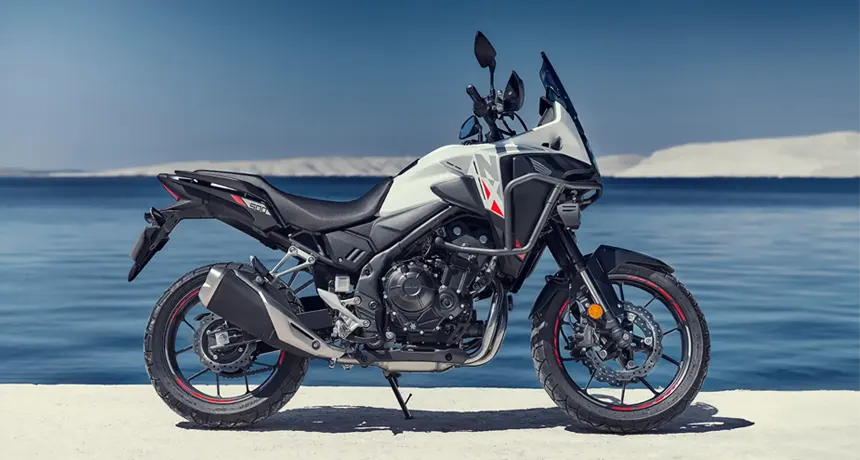
Comfort, stability, and space become just as important as performance when it comes to riding with a pillion.
The right bike keeps both riders comfortable, whether it’s a short city jaunt or a longer ride.
125cc (CBT/A1 Licence):
- Petrol: Fantic Caballero 125 – Light and stylish, with enough room for short pillion hops (£5,399)
- Electric:Vmoto Stash – Compact and quiet, offering smooth city rides with a passenger (£6,299)
A2 licence:
- Petrol: CFMoto 450MT - A capable midweight adventure bike, comfortable for pillion riders on longer trips (£5,699)
- Electric: Honda NX500 - Balanced and practical, making two-up riding easy and enjoyable (£6,899)
Full licence:
- Petrol: BMW K 1600 GT – A luxury tourer designed for comfort, giving pillions armchair-like seating on long journey (£22,415)
- Electric: Energica Experia – A premium electric tourer with excellent pillion comfort and smooth, silent performance (£25,990)
Best Bikes for Delivery Riding:
If you’re working in food or parcel delivery, practicality and running costs are key. You’ll want a bike that’s reliable, is fuel-efficient, and ideally has room for top boxes or panniers. For our top picks, head to:
- The Best Delivery Motorcycles: Top Motorbikes for couriers and Food delivery.
- 10 of the Best Electric Scooters and Mopeds for Delivery Work!
The Last Stop!
So there you have it, our guide on how to choose a motorcycle, whether it's your first or maybe you just needed some extra help considering your next bike.
We hope this has been handy!

